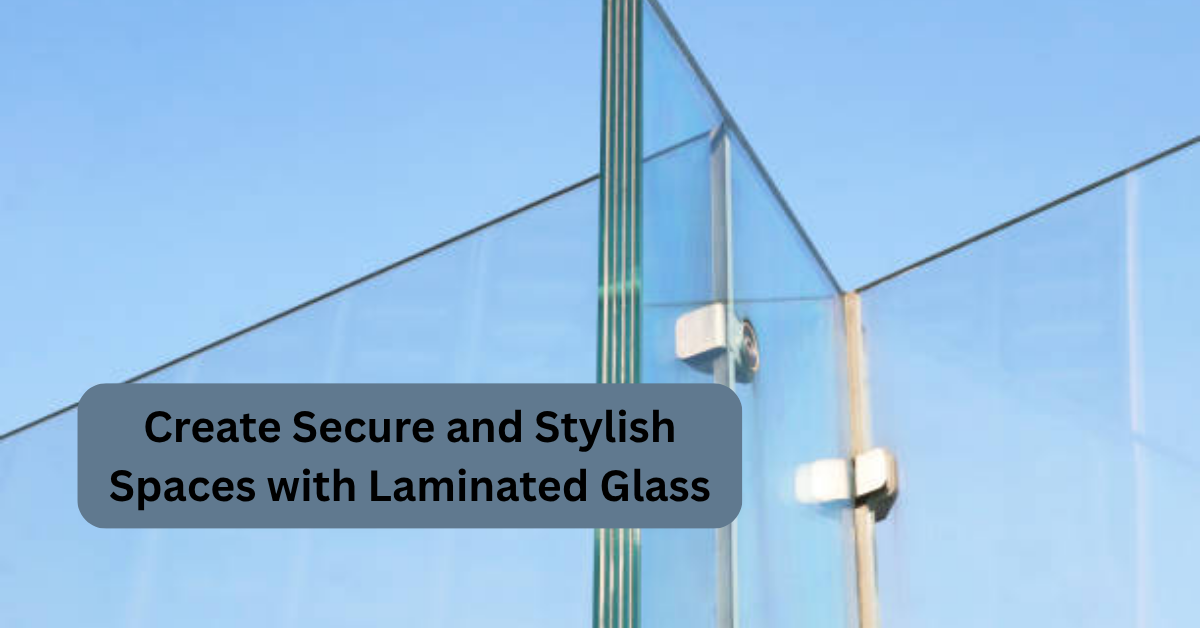Create Secure and Stylish Spaces with Laminated Glass

In modern architecture, the demand for materials that balance safety, aesthetics, and sustainability has grown rapidly. One standout option meeting all three needs is laminated glass. Whether you’re planning a renovation or building a contemporary space, incorporating laminated glass offers both functional benefits and visual elegance. For those seeking glass replacement Sydney, understanding the features and value of laminated glass can transform your design choices for the better.
What Is Laminated Glass?
Laminated glass is created by bonding two or more layers of glass with an interlayer, typically made of polyvinyl butyral (PVB) or ethylene-vinyl acetate (EVA). This process not only increases the strength of the glass but also ensures that even if broken, the glass fragments remain adhered to the interlayer—reducing risk of injury.
This innovation makes laminated glass a preferred choice for both residential and commercial applications, especially in locations where security, noise reduction, and UV protection are priorities.
Benefits of Using Laminated Glass in Modern Spaces
1. Enhanced Security
Security is often a primary concern for property owners. Laminated glass acts as a deterrent against forced entry. Its robust interlayer makes it far more difficult to penetrate than regular glass, even after multiple impacts.
This characteristic is why laminated glass is widely used in windows, doors, skylights, and balconies, especially in urban settings or high-risk areas.
2. Noise Reduction
One of the lesser-known but highly valued benefits of laminated glass is its ability to dampen sound. The interlayer between the glass panes absorbs sound vibrations, making it an excellent solution for buildings located near highways, airports, or busy urban centres.
3. UV Protection
Overexposure to ultraviolet (UV) rays can cause fading of furniture, flooring, and artwork. Laminated glass blocks up to 99% of UV radiation, helping to preserve interior materials and reduce health risks associated with prolonged UV exposure.
Design Flexibility Meets Safety
Laminated glass doesn’t just deliver strength—it also enhances aesthetic appeal. Available in a variety of tints, textures, and thicknesses, laminated glass can be customised to suit any architectural vision. Whether you’re opting for a minimalist glass façade, an elegant partition wall, or a stylish glass balustrade, laminated glass adapts seamlessly to your design needs.
Additionally, unlike other high-strength materials, laminated glass allows for natural light to enter a space, maintaining brightness without sacrificing privacy or safety.
Applications of Laminated Glass in Residential and Commercial Spaces
• Residential Use Cases
- Balconies & Stair Railings: Offering fall protection with unobstructed views.
- Skylights: Maintaining daylight access while ensuring structural integrity.
- Windows & Patio Doors: Enhancing security and reducing outside noise.
- Internal Partitions: Creating separation without visual heaviness.
• Commercial Use Cases
- Shopfronts: Boosting visual merchandising with added security.
- Office Partitions: Combining transparency with acoustic privacy.
- Building Facades: Delivering striking architecture and resistance to weather forces.
- Public Transit Stations: Reinforcing safety while keeping an open look.
Safety in Harsh Weather Conditions
For regions that experience extreme weather conditions—like strong winds or flying debris—laminated glass is particularly beneficial. Its resistance to shattering makes it suitable for storm-prone areas or bushfire zones in Australia. The glass may crack under high stress but will remain intact, continuing to protect the interior from external elements.
Sustainability and Energy Efficiency
With rising attention to sustainability, laminated glass plays a significant role in energy-efficient architecture. Its thermal insulation properties help regulate indoor temperature, reducing reliance on air conditioning and heating. Moreover, as laminated glass provides excellent UV filtering, it lessens the load on interior climate systems and contributes to green building certifications.
Current Design Trends Using Laminated Glass
The evolution of interior and exterior design in 2025 has pushed laminated glass into new and creative domains. Some of the notable design trends include:
- Coloured Laminated Glass: Infusing soft hues for artistic or branding purposes.
- Privacy-Enhanced Glass: Frosted or switchable options for dynamic spaces.
- Curved Glass Panels: Used in futuristic architecture or luxury interiors.
- Embedded Decorative Elements: Such as fabrics or metals within the glass layers.
As modern design embraces transparency, flow, and light, laminated glass meets these needs while staying compliant with safety regulations.
Laminated glass has become a popular choice not only for its durability but also for its ability to complement contemporary interior styles. Many property owners now prefer it for both renovations and new constructions due to its superior performance in harsh conditions and elegant finishes. If you’re exploring new ways to integrate both style and safety into your space, this blog on enhancing your space with laminated glass offers valuable insights into its benefits, applications, and how it fits current design trends.
Glass Replacement Sydney: When and Why You Need It
Whether you’re dealing with cracked glass, outdated designs, or are upgrading for better insulation and security, glass replacement in Sydney is often the first step toward a safer and more stylish space.
Signs you might need glass replacement include:
- Persistent fog between glass panes
- Scratched or weather-damaged glass
- Outdated safety standards
- Inefficient thermal performance
- Noise intrusion in high-traffic zones
In these cases, replacing old materials with laminated glass brings a substantial improvement in both function and appearance.
Choosing the Right Glass for Long-Term Value
Laminated glass may come at a slightly higher initial cost compared to standard float glass, but it offers long-term returns through:
- Lower maintenance needs
- Better energy efficiency
- Enhanced resale value of the property
- Reduced insurance risks in commercial application
Moreover, its versatility makes it a worthwhile investment for both new constructions and retrofits.
Installation Tips for Laminated Glass Projects
If you’re incorporating laminated glass in your next project, consider these tips:
- Measure Precisely: Laminated glass cannot be cut after production.
- Choose the Right Thickness: Based on application (balustrade, skylight, partition).
- Verify Local Building Codes: Ensure compliance with safety regulations.
- Hire Certified Installers: For professional fitting and edge sealing.
- Plan for Cleaning Access: Especially for high or external glass installations.
Correct planning ensures your laminated glass performs optimally in terms of both durability and aesthetic effect.
The Future of Building with Laminated Glass
Looking forward, laminated glass technology is advancing quickly. Innovations such as solar-integrated interlayers, smart tinting, and self-healing coatings are poised to transform how we build secure and sustainable spaces. As urban environments become denser, the role of laminated glass in ensuring safety, comfort, and style will only grow more significant.
Final Thoughts
Laminated glass is no longer just a high-end feature—it’s fast becoming a standard in smart, stylish, and safe construction. Whether you’re investing in glass replacement in Sydney or starting a fresh build, choosing laminated glass ensures that your space is future-ready.
With its blend of strength, beauty, and environmental efficiency, laminated glass stands out as a top choice for property owners who value design without compromising on safety.




